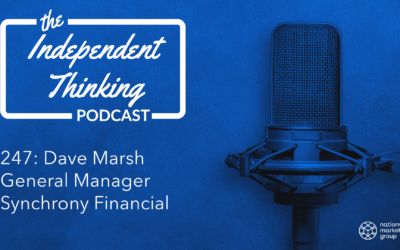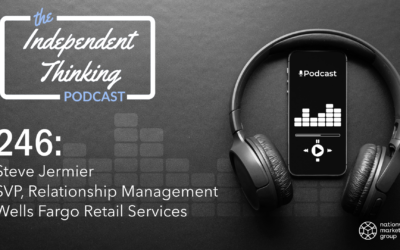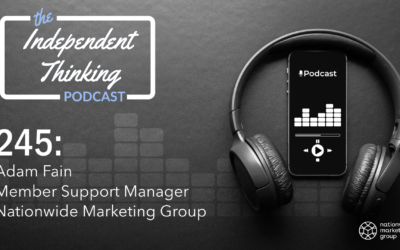Whether I plan to upgrade my iPhone, Apple Watch or other iOS device in a given year, I still find myself watching the Apple Event stream each September, just to get a sense of where the company is heading, along with their product. Apple constantly takes flack for how they talk about their product – everything is the “absolute best” version of the product they’ve “ever introduced.” And Android users are quick to point out that the newest “innovation” to appear on an iPhone is something they’ve had access to for years, despite what Apple tells consumers.
But all that aside, what Apple presents and where they place the emphasis of the event each fall is a great barometer for what the consumer of today cares about. Because, as innovative and exquisite as Apple’s products are, their attention to the end user and the brand’s ability to identify what feature or benefit is most important – even if we don’t even know it yet – is an expert class in product marketing.
So, as I watched this year’s event, what stood out most to me was the recurring appearance of Dr. Sumbul Desai. A Stanford Medicine professor, Dr. Desai serves as the Vice President of Health at Apple, overseeing health initiatives including clinical product development, and she spoke to new groundbreaking health features in the Apple Watch and Apple AirPods Pro 2.
What Apple did during the event was tap into a segment that’s among the fastest growing over the past four years. Since the pandemic, consumers – particularly those in North America – have shown tremendous interest in health and wellness related product, helping that category balloon to a record $5.6 trillion valuation this year, according to the Global Wellness Institute. And the growth won’t slow down anytime soon. GWI predicts it will grow to $8.5 trillion by 2027.
Today, North American consumers account for roughly $1.9 trillion in wellness spending, or about 34 percent of the total market. And when you look at the Mental Wellness category specifically, which includes spending on things like sleep gadgets and other mental-well-being products, North America accounts for over 50 percent of that $180.5 billion industry.
“We are surprised by the resiliency of the global wellness economy, and how quickly it has bounced back from the pandemic. It has exceeded our own expectations and forecasts,” Katherine Johnston, GWI senior research fellow, said in a press release for the launch of GWI’s Global Wellness Economy Monitor last November. “If the pandemic disrupted industry momentum in the short term, it has simultaneously created a dramatic shift in the long-term opportunities and trajectory for wellness.”
Suffice it to say, there’s a major opportunity for independent retailers to showcase a purpose-led approach when it comes to health and wellness in their marketing and take advantage of the exploding interest in this category.
Here are a few ready-made ideas to get you started.
Highlight Health and Wellness Features
Be it in-store or on your website, find ways to highlight the wellness benefits of the products you carry. Does a certain refrigerator have features that help keep produce fresher for longer? Call it out! Do you offer sleep analysis to help your customers pick the perfect mattress? Let shoppers know!
You could make it as simple as highlighting those features on the existing product pages. Or you might want to go as out-of-the-box as creating a whole separate category page for the products that go above and beyond when it comes to the health and wellness features. Showcase how the air purifiers, smart lighting options and eco-friendly laundry system all work together to create a healthier home for the customer.
Collaborate on Social
A number of manufacturers across every major product category have made health and wellness a part of their stories, which is something you should lean into. Leverage those brands’ massive followings by folding their messaging into your own social media efforts and tagging or collaborating with them on various platforms.
Showcasing those health and wellness features makes you a local thought leader, and working together with those bigger brands can only help increase your exposure beyond your zip code.
Host a Wellness Event
If you’re looking to take the next step with health and wellness and really want to ingrain it in your company culture, consider hosting a wellness event at your store. This could be for employees only or the broader community, but it’s a great way to encourage those around you to consider their own health and wellness in a variety of aspects.
There are plenty of wellness event examples out there, but some simple-to-do ones include:
-
- A mindfulness challenge. Create a time-based challenge that’s filled with daily prompts to get your team/customers to think about and engage in mindfulness activities.
-
- Host a wellness seminar. From healthy sleep habits to healthy cooking demonstrations, there are plenty of ways to work with outside experts (or your own staff) that would create an engaging and educational event.
-
- Health and wellness fair. Work with one or multiple manufacturing partners to organize a health and wellness fair at your store. Open your doors to the community and showcase all the products available to help improve your customers’ own health and wellness journeys.
Health and wellness is at the forefront of so many conversations. From sports to homebuilding, technology to cooking – consumers are well attuned to seeing and hearing brands engage in the topic even if it’s not within their primary domain.
In fact, according to the trend forecasting firm TrendWatching, we’ve entered the so-called “age of healing,” where consumers are constantly exploring new ways and methods of self-improvement. That, in turn, has resulted in them gravitating towards brands and retailers that are willing to meet them on that journey.
So, feel free to step out of your own comfort zone and try to incorporate health and wellness into your marketing strategy and broader business plan.




